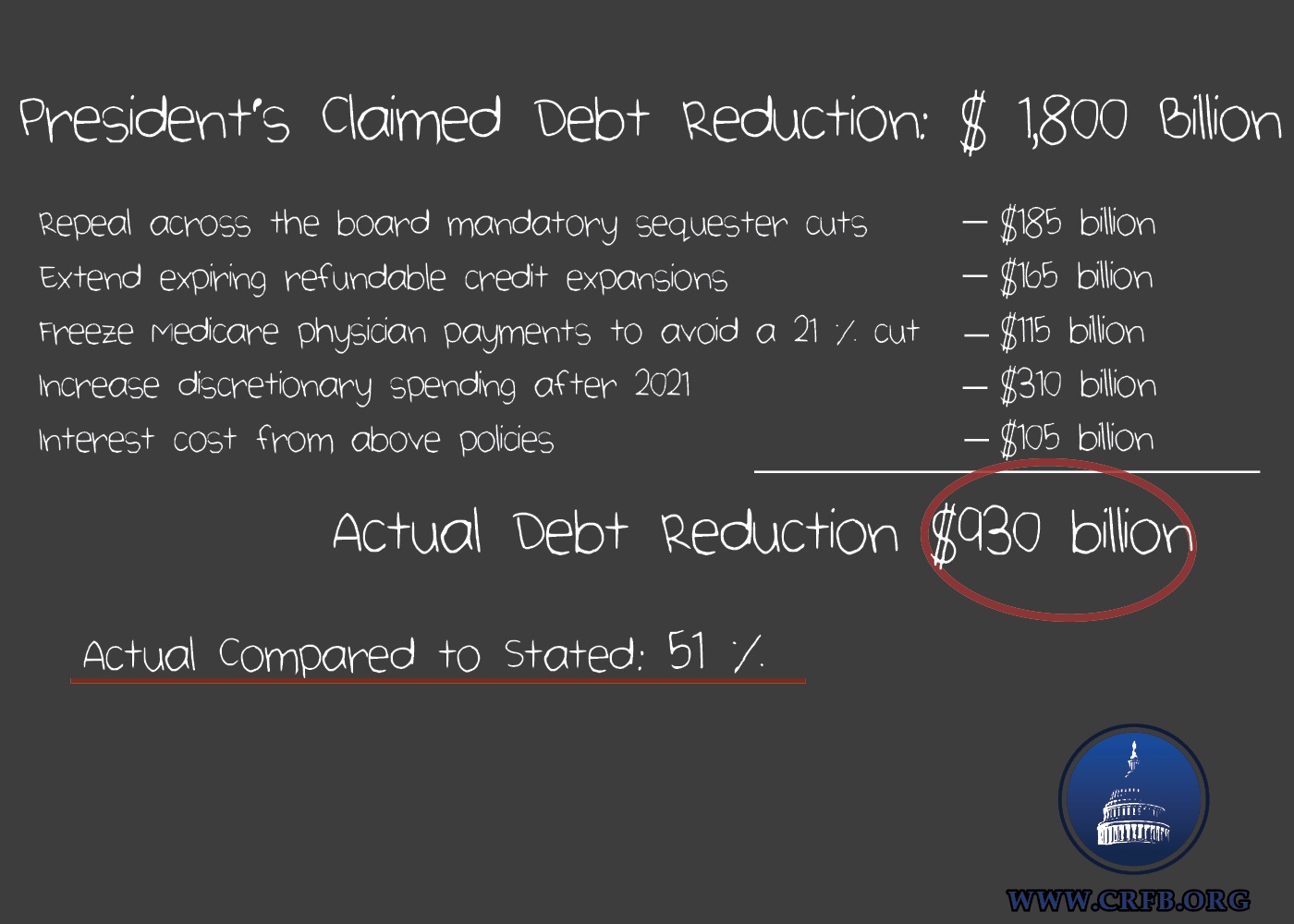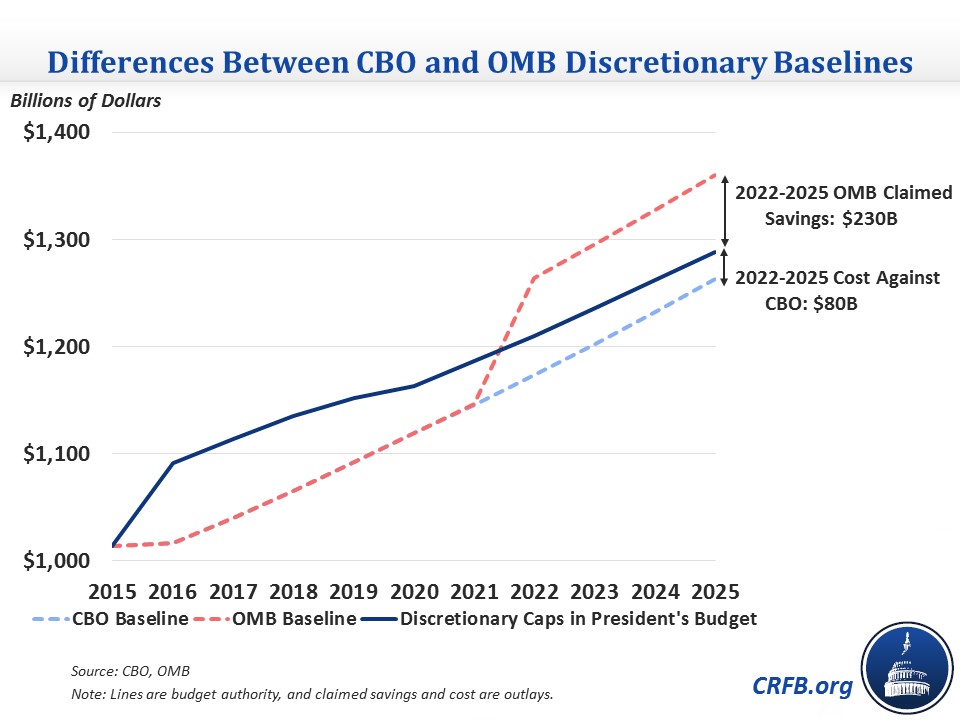The President's Budget Saves Only Half of What It Claims
The administration may claim that its budget "achieves about $1.8 trillion in deficit reduction," but our analysis finds that it only reduces deficits by roughly half that amount -- $930 billion.
To get to that $1.8 trillion figure, the President's budget is at odds with standard budget practices, ignoring the costs of permanently extending several deficit-increasing policies and significantly understating the amount of sequester relief being proposed.

Source: OMB and CRFB estimates
Specifically, the administration ignores the costs of 1) extending refundable tax credit expansions that are set to expire after 2017; 2) overriding a 21 percent cut to Medicare physician payments scheduled to occur in April; and 3) repealing the sequester of mandatory spending -- including Medicare and farm programs -- currently in law.* Enacting these policies would cost $165 billion, $115 billion and $185 billion, respectively, through 2025. This allows the administration to effectively double count savings that are necessary to offset these policies toward deficit reduction as well.
Additionally, unlike how Congress' official scorekeeper -- the Congressional Budget Office (CBO) -- would judge such a proposal, the administration understates how much sequester relief is in its budget by $310 billion. In essence, the President's budget assumes a baseline in which annually-appropriated spending reverts back up to pre-sequester levels (adjusted for inflation) after the sequester-lowered caps end in 2021. However, CBO assumes and standard budget convention dictates that annually-appropriated discretionary spending continues to grow with inflation from current law levels after 2021. Thus, while the President spends above sequester levels every year through 2021, he claims "savings" simply by setting spending below the much higher pre-sequester levels in 2022 through 2025. Using the normal CBO convention, which assumes discretionary spending would continue at current law levels adjusted for inflation after the caps expire, the proposed caps would actually increase such spending by $80 billion through 2025, instead of saving $230 billion as the budget claims.

The added reductions in interest spending due to these savings accounts for another $105 billion of claimed savings, bringing the total discrepancy to almost $900 billion. So while the administration claims to reduce the debt by $1.8 trillion, we find only $930 billion of savings once his budget pays for all the costs it ignores.
Notably, the President's budget would still improve debt somewhat over current law, and by OMB's own calculations would put debt on a very slight downward path. But as this blog shows, the amount by which they reduce the debt is being overstated.
For more details on the policies within the President's budget, see CRFB's paper from yesterday.
* Technically, the President's budget assumes that the costs of these policies are part of the baseline, effectively assuming away the costs of continuing them.

